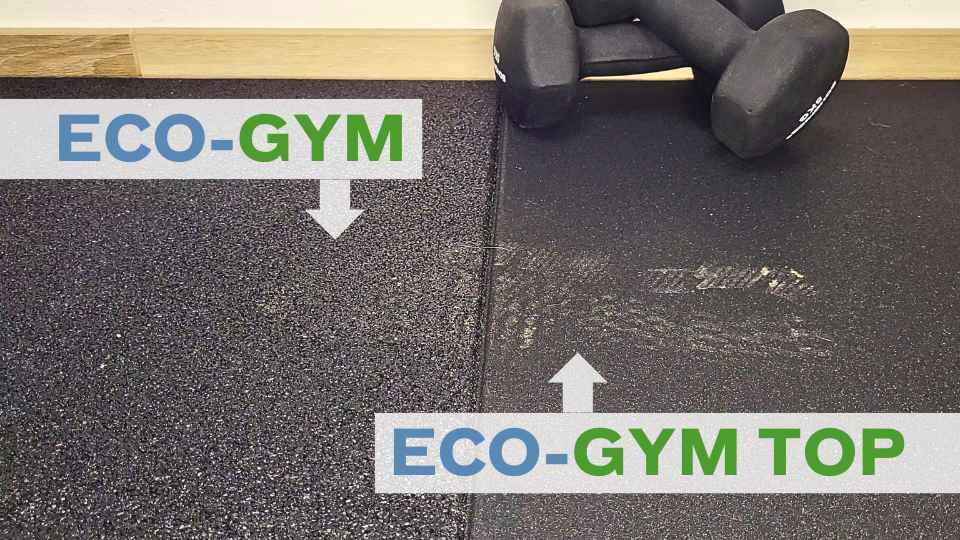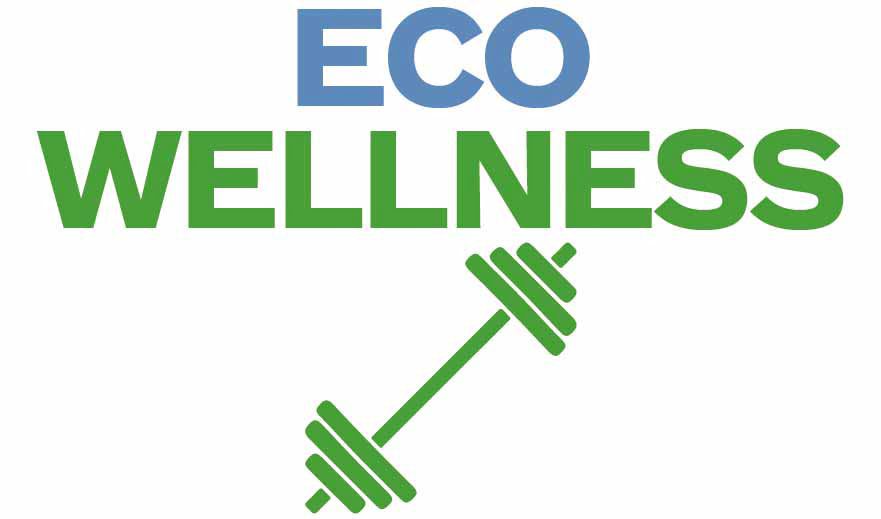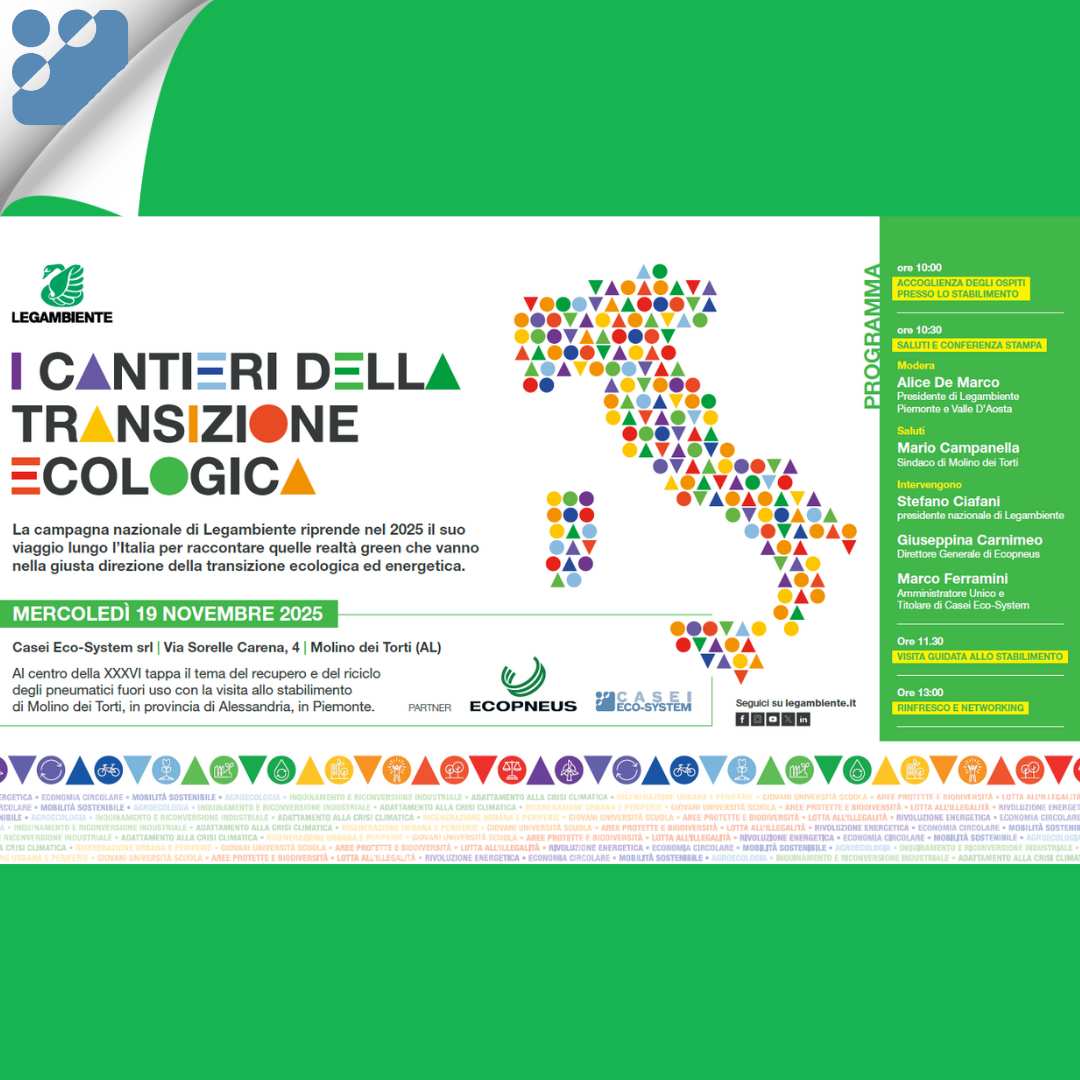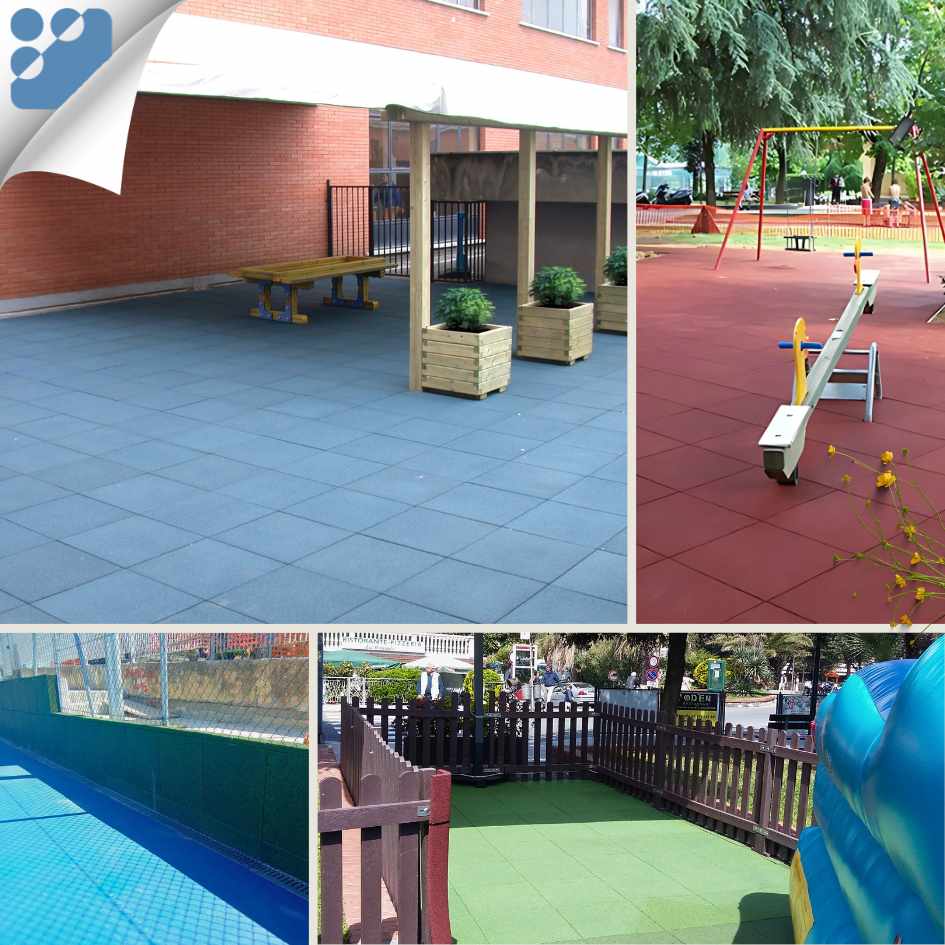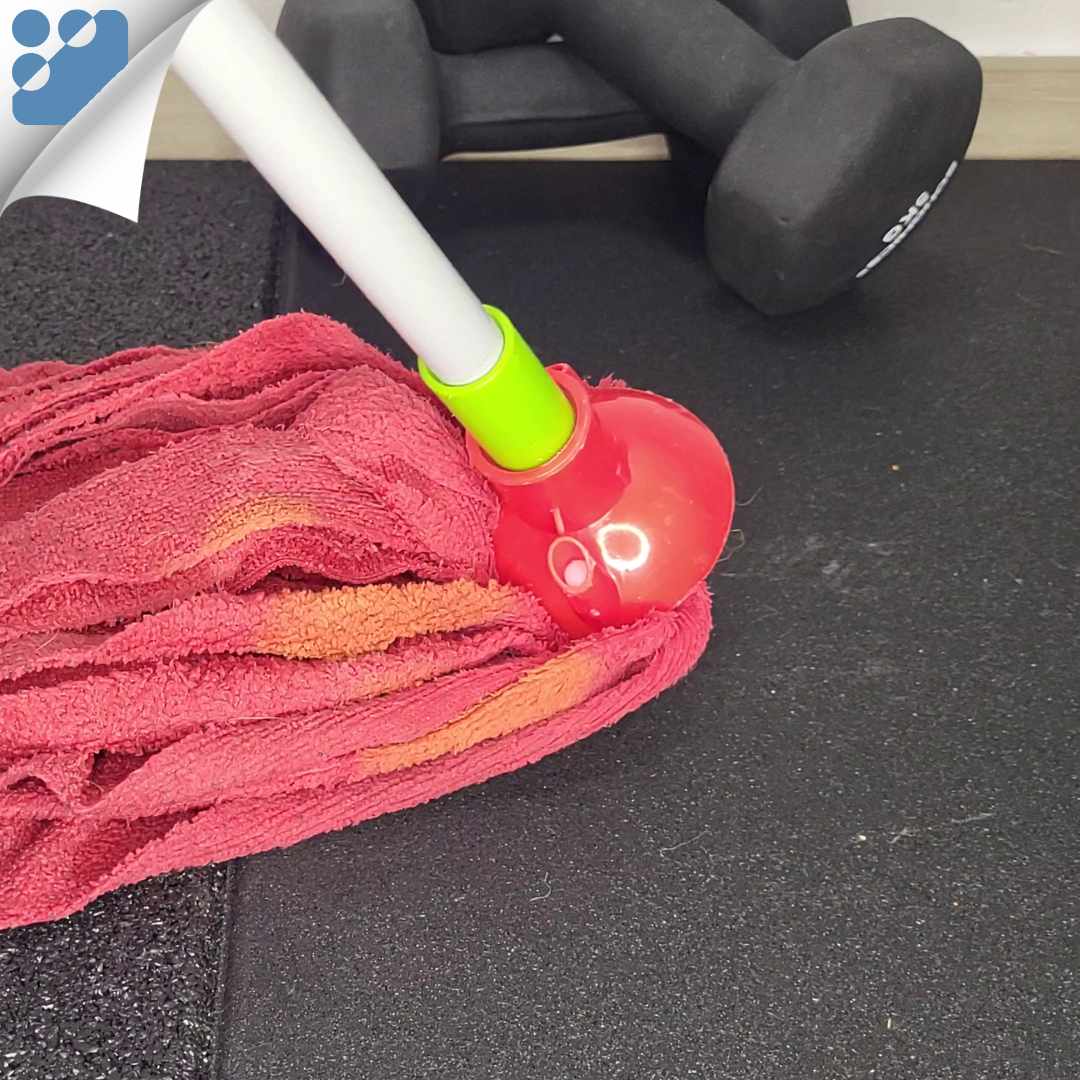
Tips and Strategies for Effective and Safe Cleaning of Anti-Trauma Floors.
In this guide you’ll discover the best tips for cleaning and keeping the rubberized flooring in your gym or fitness space, whether it’s roll or tile.
General process of cleaning gym floors.
Cleaning non-trauma floors requires specific precautions depending on the type of flooring:
Flooring in Rolls
- Remove Superficial Debris:
Use a HEPA-filtered vacuum cleaner or soft broom to remove dust and dirt that might accumulate on the smooth surface of the rolls. - Cleaning with Microfiber Mop:
Prepare a solution of neutral pH detergent and water. Run the well-wrung mop over the surface to remove dirt without damaging the floor. - Avoid Excess Water:
Water may accumulate between the edges of the roll and the floor underneath, causing potential bulges. Always use little water and let it dry naturally.
Tile Flooring
- Removing Dust from Joints:
Concentrate suction on the joints between the plates to prevent the accumulation of dirt and moisture that could seep into the joints. - Surface Cleaning with Mild Detergents:
Use a slightly damp microfiber mop and a pH-neutral detergent to clean evenly without saturating joints with water. - Inspection and Maintenance of Joints:
Regularly check for dirt or liquid deposits in the joints and clean thoroughly with a soft brush if necessary.
The importance of granule size in cleaning
The grain size of recycled rubber non-trauma flooring can greatly influence the ease of cleaning and how the products react to the presence of stains or dirt buildup. Here are some key differences:
- Ultra-fine granule (e.g., ECO-GYM TOP):
Floors made with ultrafine granule, called powder, have a very smooth surface that facilitates moping and reduces water penetration. This makes cleaning faster and smoother. However, the smooth surface tends to show stains or dirt more easily, requiring regular interventions to maintain its flawless appearance. - Medium Grain Size (e.g., ECO-GYM):
Floors with medium grains offer excellent ability to cover the presence of stains due to their more irregular texture. They also have greater drainage power, making them ideal for high-traffic spaces or areas where liquids are used.
Practical tips for cleaning
Recommended Cleaning Routine
Effective scheduling ensures floors are always tidy:
| FREQUENCY | ACTIVITY | NOTES |
| Daily | Vacuuming and light washing | Use suitable detergents. |
| Weekly | More thorough cleaning of joints. | Focus on high-traffic areas. |
| Monthly | Deep cleaning and condition check | Remove stains and check for damage or bulges. |
a
Managing Specific Situations
Cleaning Stubborn Stains
- Apply a concentrated neutral pH detergent directly to the stain.
- Leave on for a few minutes and scrub gently with a soft bristle brush.
Removal of Oily Stains
- Use mild detergents designed for oil removal, avoiding harsh products such as solvents or industrial degreasers.
Cleaning products: recommendations and precautions
What to Avoid
- Solvents and Acidic Liquids: They can erode and weaken the rubber.
- Alkaline Cleaners: Alter the color and properties of the floor.
- Wax-Based Products: They make the surface slippery, compromising safety.
Recommended Products
To keep recycled rubber dirt and rubberized floors in excellent condition, it is advisable to choose gentle cleaners formulated not to alter the characteristics of the rubber. Prefer pH-neutral products or nonaggressive solutions that provide effective cleaning without risk to the surface.
Try the Cleaner First
Given the wide variety of cleaners on the market, it is important to check the compatibility of the product you choose with your floor. Always test the cleaner on a small, hidden corner before using it on the entire surface. This simple expedient helps avoid discoloration or unexpected damage.
Frequently Asked Questions (FAQ)
|
a
Taking care of recycled rubber non-trauma flooring for gyms is essential to ensure safety, hygiene and durability. Regular maintenance, combined with the use of the right products, preserves the properties of the floor and helps reduce environmental impact by avoiding frequent replacement.

